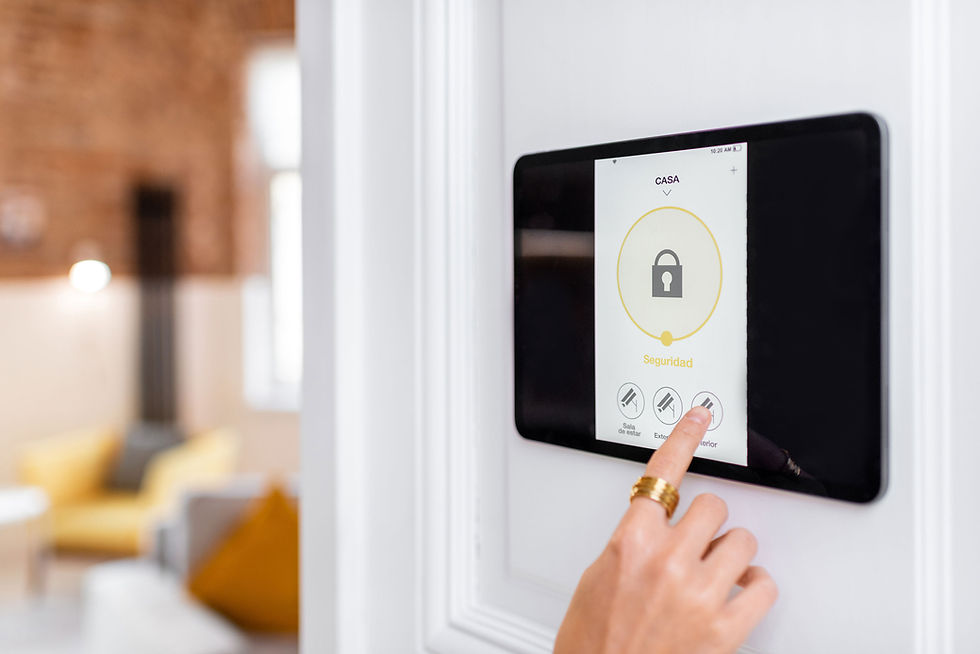In the Shadows: Crafting Emails for the Dark Mode Era
- scalerrs
- Nov 10, 2023
- 5 min read
In the ever-evolving tapestry of digital communication, where pixels weave stories and aesthetics meet functionality, the canvas of email design has undergone a fascinating metamorphosis. The latest stroke on this canvas that has captured the attention of users and marketers alike is the advent of dark mode—an intriguing, visually immersive twist that has become more than just a passing trend.
A Digital Metamorphosis
As our digital devices become extensions of our lives, the way we consume content has become a nuanced experience. Dark mode steps onto the stage not merely as a color scheme preference but as a testament to the dynamic relationship between technology and user behavior. Imagine an inbox cloaked in darker hues, where the traditional stark white backdrop takes on a more subdued, sophisticated demeanor.
Statistics Illuminate the Shift: A substantial 40% of iPhone users, seeking respite from the luminous glow of traditional interfaces, have opted for the suave embrace of dark mode, according to insights from the Nielsen Norman Group. It's not just a cosmetic choice; it's a user-driven evolution in how we engage with digital content.
The Rise of Dark Mode: Embracing Aesthetic and Practical Preferences
In recent times, the digital landscape has undergone a notable transformation in how users engage with content, and at the forefront of this evolution is the widespread adoption of dark mode. This isn't just a stylistic choice; it's a dynamic response to the changing preferences and needs of users.
Embracing the Dark Side: Dark mode isn't merely a passing trend; it's a preference that has gained remarkable traction, especially among users navigating the digital realm through their mobile devices. The ubiquity of smartphones and the increasing amount of time spent on them have made dark mode not just a visual preference but a practical one too.
Beyond Aesthetics – Practicality Matters: According to a study by the Nielsen Norman Group, a substantial 40% of iPhone users have embraced the darker aesthetic. This statistic isn't just a number; it's a testament to a significant shift in how users choose to experience digital content. As the lines between functionality and aesthetics blur, email marketers find themselves at a pivotal juncture – one where understanding and adapting to this shift become paramount.
Navigating the Shadows: Challenges in Dark Mode Email Design
While dark mode brings a fresh and sophisticated look to digital interfaces, it casts a unique set of challenges for email marketers aiming to create visually appealing and functional campaigns.
Color Conundrum: The transition from light to dark mode is not merely a switch in background hues. It introduces a color conundrum where the vibrancy and clarity of visuals optimized for light mode may not translate seamlessly. Colors that pop against a light background might lose their impact or even visibility against a darker canvas. Striking the right balance becomes a delicate dance between aesthetics and functionality.
Visibility Quandaries: The challenge doesn't end with colors alone. Ensuring visibility in dark mode requires meticulous attention to detail. Text, images, and other elements must retain clarity and legibility when presented on a dark background. The risk of content becoming barely visible or losing its intended meaning is a genuine concern.
Creating Dual-Compatible Templates: A Dance Between Light and Dark
In the intricate realm of dark mode email design, a one-size-fits-all template proves as elusive as a universal color scheme that suits every brand. The diversity in email clients, each with its unique rendering nuances, calls for a more nuanced strategy – the dual-compatible design approach.
Impracticality of Universality: Crafting a singular template that perfectly caters to both light and dark modes across all email clients is akin to chasing a digital utopia. The practicalities of rendering, display capabilities, and user preferences vary significantly. What dazzles on one platform might dwindle into obscurity on another.
Tailoring for Relevance: The key lies in strategic tailoring. Identifying the email clients predominantly used by your subscribers allows you to create templates that align with their preferred interface. Rather than wrestling with the intricacies of all platforms, focus on those that matter most to your audience. It's an approach grounded in pragmatism and effectiveness.
Testing and Adaptation: Fine-Tuning the Symphony of Dark Mode Design
In the dynamic realm of email marketing, where pixels and preferences intertwine, the journey doesn't end with template creation. It takes a meticulous process of testing and adaptation to ensure your emails shine consistently, whether in the brilliance of light or the subtlety of dark.
Cruciality of Testing: Regular testing emerges as the unsung hero in the dark mode design narrative. It's not merely about scrutinizing how your emails appear; it's a quest to understand how they are experienced. Testing allows you to fine-tune elements and navigate the nuances of different email clients.
Elements Under the Microscope: Colors, backgrounds, and fonts become protagonists in this testing saga. Colors that sing harmoniously in light mode might strike a different chord in the dark. Backgrounds that complement your content could clash against a darker canvas. Fonts that convey your message crisply might lose their charm in a different palette.
A Customer-Centric Approach: Illuminating Dark Mode Experiences
In the ever-evolving landscape of email marketing, one trend emerges not just as a stylistic choice but as a profound commitment to customer-centricity – the rise of dark mode design. It's not merely about colors on a canvas; it's a strategic embrace of user preferences and an acknowledgment that customer experiences should take center stage.
Crafting Experiences, Not Just Emails: Designing for dark mode is more than a visual preference; it's a nod to the importance of crafting experiences rather than just emails. It reflects an understanding that the choices users make in viewing their emails contribute to their overall satisfaction and engagement.
Aligning with Preferences: Embracing dark mode is a tangible way of aligning your email marketing strategies with the preferences of your audience. It's an acknowledgment that customization isn't just a buzzword but a pivotal element in creating meaningful connections. By adapting to the choices users make, brands signal that they are attuned to individual needs, thereby fostering a deeper resonance.
In the Shadows We Find Brilliance
As we wrap up this exploration into the realm of dark mode design, the call is clear – embrace the shadows to illuminate your email campaigns. It's not about following a trend for the sake of it; it's about recognizing that the shadows are where your audience often resides. By meeting them there, you're not just sending emails; you're crafting experiences tailored to each recipient.
In the dance between light and dark, choose to be a choreographer of memorable experiences. Dark mode isn’t a fleeting trend; it's a stepping stone towards a more customer-centric approach in email marketing. So, let the shadows guide your next campaign, and watch as your emails become more than messages – they become experiences that linger in the minds of your subscribers.








Comments